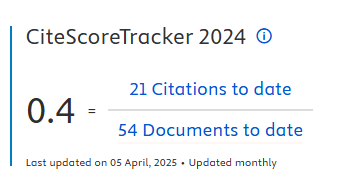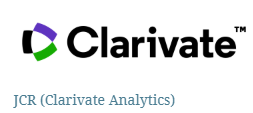Horizontal innovation and ambidextrous organization: a new innovation model applied in a mature industrial company
DOI:
https://doi.org/10.5585/iji.v9i3.19012Keywords:
Horizontal innovation, Incremental innovation, Radical innovation, Suggestion systems, Internal innovation milieu, Ambidextrous organization.Abstract
Objective of the study: Analyze how Horizontal Innovation enables a company to produce radical and incremental innovations, making it ambidextrous.
Methodology/approach: The research is a case study at a mature Brazilian company that puts Horizontal Innovation based on its Employee Suggestion System (ESS) into practice. A total of 18 interviews were conducted, including: all 4 directors and all 10 managers of the organization, in addition to 2 coordinators and 2 researchers.
Originality/Relevance: The paper creates and defines the concept of Horizontal Innovation: a type of innovation that originates from all employees, usually stemming from an ESS. The study shows, based on continual ESS operations, how a company can achieve ambidexterity and systematically produce incremental, radical products and processes.
Main results: ESS produces radical innovations as well as incremental ones, although the latter occur more frequently, and lead to Horizontal Innovations. The systematic search for Horizontal Innovations paves the way for a company to become ambidextrous, promoting, with the same competence, these two types of innovation.
Theoretical/methodological contributions: The study contributes to the debate that defends the viability of innovative ambidexterity, and to new insights that clarify how a culture that stimulates ambidexterity can influence the ambidextrous behavior of employees through Horizontal Innovation
Practical implications: A new type of innovation is proposed and described, reinforcing the value of an ESS as an important management tool. The case enables comparisons and contrasts with others for best practices benchmarking.
Downloads
References
Alvares, A.C.T. (2017) Inovação Horizontal: ambidestria e sustentabilidade. ´Forum FGV Inovação. Available at: https://docplayer.com.br/159963064-Inovacao-horizontal-ambidestria-e-sustentabilidade-antonio-carlos-teixeira-alvares-2-inovacoes-radicais-incrementais-e-ambidestria.html (accessed at 12 November 2021).
Alvares, A. C. T. (2017-2). Horizontal Innovation versus ambidexterity. The Canmaker Magazine. Available at: https://www.canmaker.com/online/horizontal-innovation-versus-ambidexterity/ (accessed at 12 November 2021)
Alvares, A. C. T. (2016) Innovation has more to do with culture than money. The Canmaker Magazine. Available at: https://www.canmaker.com/online/?s=Innovation+has +more+to+do+with+culture+than+money (accessed 01 June 2021)
Alvares, A. C. T., Barbieri, J. C. & Machado D.D. (2004), O Caso Brasilata, Barbieri, J. C. (Ed.), Innovative Organizations: Brazilian case studies, FGV Editora, São Paulo, SP, pp. 77-111.
Barbieri, J. C. & Alvares, A. C. T. (2016) Sixth generation innovation model: description of a success model, Revista de Administração e Inovação, Vol. 12 No. 2, pp. 116-127. https://doi.org/10.1016/j.rai.2016.04.004
Barbieri, J. C. & Alvares, A. C. T. (2016) Continual Innovation Model; an example of a concrete case, in SIMPOI FGV/EAESP, São Paulo, pp. 1-17
Barbieri, J. C., & Álvares, A. C. T. (2005) O retorno dos sistemas de sugestão: abordagens, objetivos e um estudo de caso. Cadernos EBAPE, Vol. 3, No special, pp. 01-17. https://doi.org/10.1590/S1679-39512005000500012
Barbieri, J. C. & Alvares, A. C. T. (2004), Inovações nas organizações empresariais, Barbieri, J. C. (Ed.), Innovative Organizations: Brazilian case studies, FGV Editora, São Paulo, SP, pp. 41-63.
Barbieri, J. C., & Álvares, A. C. T. (2002) Corporate innovative means: concepts, models and cases. Revista IMES Administração, Vol. 56, pp. 34-43.
Barbieri, J. C., Álvares, A. C. T., & Cajazeira, J. E. R. (2009). Gestão de ideias para inovação contínua. Bookman Editora, São Paulo, SP.
Bauer, M. W., & Gaskell, G. (2017). Qualitative research with text, image and sound: a practical manual. Vozes, Petrópolis, Brazil.
Bruneel, J, Velde, E. V., Clarysse, B & Paul G. (2012) Improving the success of radical innovation projects within established firms: engaging employees across different hierarchal levels, Technology Analysis & Strategic Management, Vol. 24, No. 9, pp. 951-965. https://doi.org/10.1080/09537325.2012.718667
Buech, V., Michel, A. & Sonntag, K. (2010). Suggestion systems in organizations: what motivates employees to submit suggestions? European Journal of Innovation Management. Vol. 13, No 4, pp. 507-525. https://doi.org/10.1108/14601061011086311
Chen, K. Y., Hsiao, C. H., Chen, P. Y., & Lee, C. F. (2018) The relationships among different types of market knowledge, ambidextrous learning, and different types of innovations, in Proceedings of International Academic Conferences. International Institute of Social and Economic Sciences,
Creswell, J. W. (2010), Research Project, Penso Editora, São Paulo, SP.
Edelman, B., & Eisenmann, T. R. (2011). Google Inc, Harvard Business Review, Vol. 77, pp. 96-108.
Economic Cooperation & Development Organization and Statistical Office of the European Communities Oslo Manual 2018: guidelines for collecting, reporting and using data on innovation. Paris: OECD, EUROSTAT, 2018.
Eisenhardt, K. M. (1989) Building theories from case study research, Academy of management review, Vol. 14 No. 4, pp. 532-550. https://doi.org/10.5465/amr.1989.4308385
Gibson, C.B., Birkinshaw, J.: The Antecedents, Consequences, and Mediating Role of Organizational Ambidexterity. Academy of Management Journal, vol. 47, 209–226 (2004) https://doi.org/10.5465/20159573
Gundling, E. (2000), The 3M way to innovation Kodanska America, New York, NY.
Heath, C & Heath D. (2010) The Turnaround; simple ways to manage big transformations. Best Business, Rio de Janeiro, RJ.
Kortmann, S. (2015), The mediating role of strategic orientations on the relationship between ambidexterity-oriented decisions and innovative ambidexterity. Journal of Production Innovation Management, Vol. 32, No. 5, pp. 666-684. https://doi.org/10.1111/jpim.12151
Kortmann, S., Gelhard, C., Zimmermann, C. and Piller, F. T. (2014) Linking strategic flexibility and operational efficiency: The mediating role of ambidextrous operational capabilities, Journal of Operations Management, Vol. 32, No. 7, pp. 475-490. https://doi.org/10.1016/j.jom.2014.09.007
Koryak, O., Lockett, A., Hayton, J., Nicolaou, N., & Mole, K. (2018), Disentangling the antecedents of ambidexterity: Exploration and exploitation, Research Policy, Vol. 47, No. 2, pp. 413-427. https://doi.org/10.1016/j.respol.2017.12.003
ISO - International Organization for Standardization (2015). ISO 9001:2015. Quality management systems — Requirements. Geneve, 2015.
Lasrado F., Ari M., Rizvi A., Urdzik C. (2016) Critical success factors for employee suggestion schemes: a literature review. International Journal of Organizational Analysis, Vol. 24, No 2, 2016. https://doi.org/10.1108/IJOA-04-2014-0753
Lawson, B. & Samson, D. (2001), Developing innovation capability in organizations: a dynamic capabilities approach, International Journal of Innovation Management, Vol. 5, No., 03, pp. 377-400. https://doi.org/10.1142/S1363919601000427
Le, P.B., Lei, H., Le, T.T., Gong, J. & Ha, A.T. (2020), Developing a collaborative culture for radical and incremental innovation: the mediating roles of tacit and explicit knowledge sharing, Chinese Management Studies, Vol. ahead-of-print No. ahead-of-print. https://doi.org/10.1108/CMS-04-2019-0151
March, J. G. (1991), Exploration and exploitation in organizational learning, Organization science, Vol. 2, No. 1, pp. 71-87. https://doi.org/10.1287/orsc.2.1.71
Marin-Garcia, J. A., Tarraga, A. M. & Mascarell, C. S. (2018), Kaisen philosophy: the keys of the permanent suggestion systems analyzed from workers’ perspective, The Total Quality Management Journal, Vol. 30, No. 4, pp 296-320. https://doi.org/10.1108/TQM-12-2017-0176
Melton, H. & Hartline, M.D. (2015), Customer and employee co-creation of radical service innovations, Journal of Services Marketing, Vol. 29 No. 2, pp. 112 - 123. https://doi.org/10.1108/JSM-02-2014-0048
Paiva, E. L. (2019) Ambidexterity and coevolution in operations: integrating theory and practice, Revista de Administração de Empresas, Vol. 59, No. 2, pp. 144-148. https://doi.org/10.1590/S0034-759020190206
Pertusa-Ortega, E. M., Molina-Azorín, J. F., Tarí, J. J., Pereira-Moliner, J., & López-Gamero, M. D. (2020). The microfoundations of organizational ambidexterity: A systematic review of individual ambidexterity through a multilevel framework. BRQ Business Research Quarterly, https://doi.org/10.1177/2340944420929711
Peters, T 1998. O círculo da inovação: você não deve evitar o caminho para o seu sucesso. São Paulo, Editora Harbra, pg. 26.
Robinson, A. G., & Schroeder, D. M. (2014). The idea-driven organization: unlocking the power in bottom-up ideas. San Francisco, Berrett-Koehler Publishers, Inc.
Robinson, A. G & Schroeder, D. M. (2009) The role of front-line ideas in lean performance improvement, Quality Management Journal, Vol, 16, No. 4, pp. 27-40. https://doi.org/10.1080/10686967.2009.11918248
Robinson, A. G & Schroeder, D. M. (1997) Corporate Creativity: How innovation and Improvement Actually Happen, Barret-Koeler Publisher, Vol 16, pp. 27-40.
Scandelari, V. R. N & Cunha, J. C. (2013) Ambidexterity and social environmental performance in the electrical/electronic sector. Revista de Administração de Empresas, Vol. 5, No. 3, pp. 183-198.
Scott, N. (2014) Ambidextrous strategies and innovation priorities: adequately priming the pump for continual innovation, Technology Innovation Management Review, Vol. 4, No. 7, pp. 44-51.
Silveira-Martins, E., & Rossetto, C. R. (2015). Ambidestria organizacional–exploração e explotação: um estudo bibliométrico nas bases de dados internacionais. Revista Gestão Organizacional, 7(2). https://doi.10.1590/S0034-75902013000200006
Skarzynski, P., & Gibson, R. (2008). Innovation to the core: a blueprint for transforming the way your company innovates. Boston, Mass.: Harvard Business Press.
Ternes, A. (1997) WEG, 36 Anos de História – 35 Years of History, Gráfica e Editora Pallotti: Porto Alegre.
Tushman M, & O’Reilly III (2013), Organizational ambidexterity: Past, present, and future, Academy of management Perspectives, Vol. 27, No. 4, pp. 324-338. https://doi.org/10.5465/amp.2013.0025
Tushman M, & O’Reilly III (2004), The Ambidextrous Organization, Harvard Business School Press, Boston.
Van De Ven, A. H., Angle, H. L., & Poole, M. S. (2000), Research on the management of innovation: the Minnesota studies, Oxford University Press, Oxford.
Von Hippel E. (2002) Open-source projects as horizontal innovation networks - by and for users MIT Sloan School of management Working Paper 4366-02 June 2002.
Wolf, V. (2019). Ambidexterity in Service Innovation Research: A Systematic Literature Review. 14th International Conference on Wirts chafts informatik, February 24-27, 2019, Siegen, Germany.
Yasuda, Y. (1991), 40 years, 20 million ideas: the Toyota suggestion system, Productivity Press, Portland.
Yin, R. K (2015). Estudo de caso: planejamento e método. Bookmam, Porto Alegre.
Downloads
Published
How to Cite
Issue
Section
License
Copyright (c) 2021 Antonio Carlos Teixeira Alvares, José Carlos Barbieri, Dafne Oliveira Carlos de Morais

This work is licensed under a Creative Commons Attribution-NonCommercial-ShareAlike 4.0 International License.
- Abstract 964
- PDF 715













